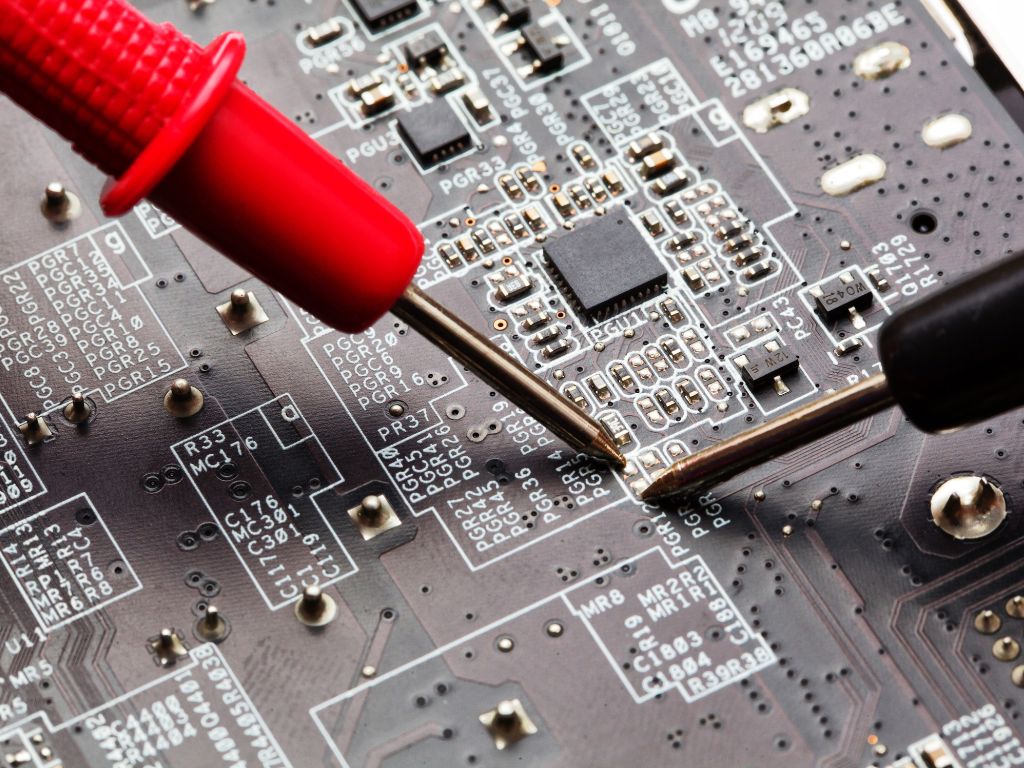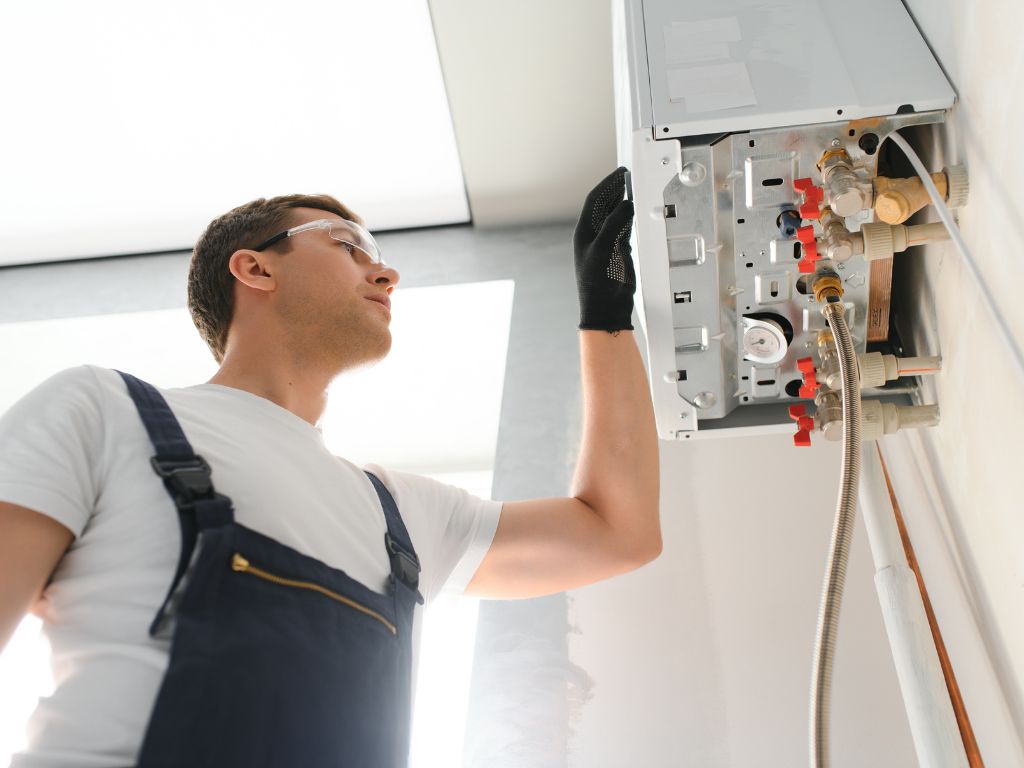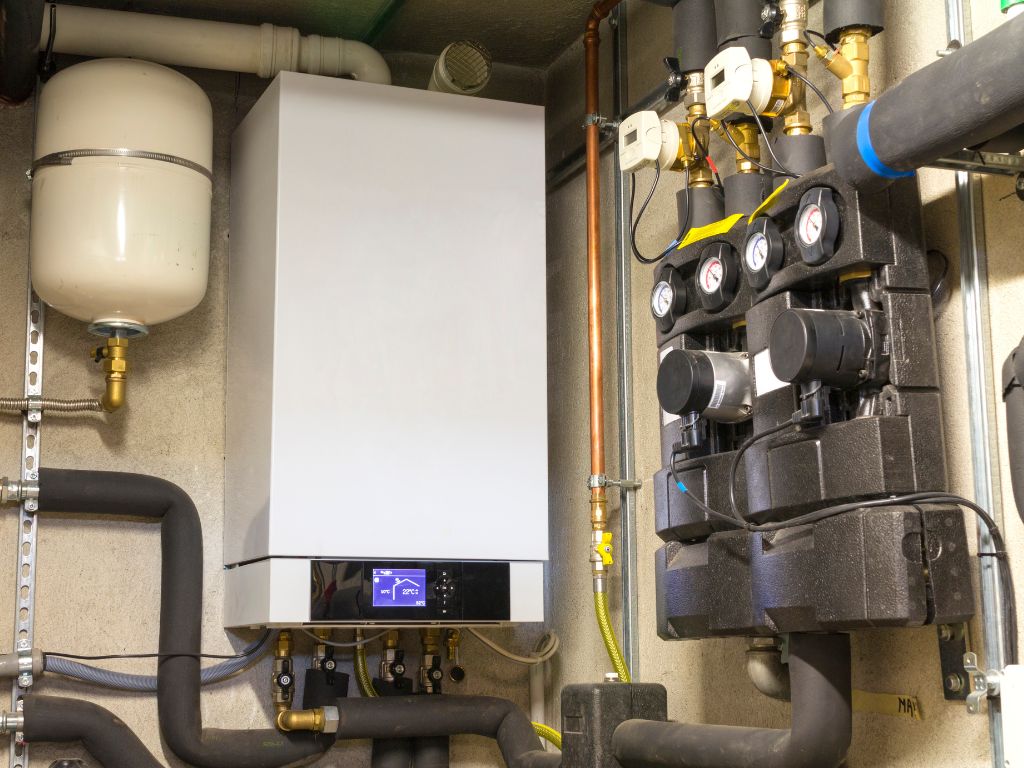Boiler PCB faults can often arise, causing inconvenience and discomfort in homes across the UK.
The Printed Circuit Board (PCB) in a boiler is a crucial component that controls its operation, ensuring everything runs smoothly. When a PCB fault occurs, it can lead to significant issues with the boiler’s functionality.
Identifying and rectifying these faults requires a comprehensive understanding of the boiler PCB system.
Whether it’s a malfunctioning PCB board boiler, installing a PCB or a specific PCB fault on a boiler, skilled technicians are needed to diagnose and fix these problems effectively.
Addressing these issues promptly ensures the boiler operates efficiently, providing warmth and hot water without interruption.
What are the common causes of a faulty PCB?

There are a variety of specific causes but usually find two main reasons at play that you can pinpoint a faulty PCB down to; water damage and boiler vibrations.
Water Damage
One prevalent and concerning PCB fault on a boiler is water damage. When moisture infiltrates a boiler’s PCB, it can corrode metal traces and components, leading to reduced conductivity and functionality.
Additionally, water can cause short circuits, resulting in malfunctions or permanent damage.
Electronic components like capacitors and resistors may fail, rendering the PCB inoperable. Water can also compromise insulation, increasing the risk of electrical breakdown.
Moisture can foster mould growth on the PCB, impacting electrical performance and posing health risks. Recognising these signs of water damage is crucial for plumbers and electricians in diagnosing and addressing boiler PCB faults.
Boiler Vibrations
Boiler vibrations pose a common issue in PCB faults, vital for plumbers and electricians to address.
Properly mounting and securing the PCB within the boiler can prevent excessive movements and vibrations that may lead to malfunctions.
Conducting regular vibration analysis tests on the PCB and boiler components helps detect abnormal vibrations early, averting potential failures.
Stable temperature and humidity levels within the boiler environment are crucial to prevent PCB material degradation, which exacerbates vibrations.
Implementing shock absorption materials or techniques around the PCB and periodic inspections of the boiler’s structural integrity are key measures to dampen vibrations and ensure the PCB’s reliability in boilers.
What are common signs of a faulty boiler PCB?

So whilst we know what are the causes, how exactly can you spot these faults? Here’s what you need to be aware of.
The smell of burning
A distinct burning odour is a pivotal indicator of a PCB fault in boilers, a critical detail for plumbers and electricians.
This scent, often reminiscent of burnt plastic or electrical components, may include chemical fumes from overheated or malfunctioning printed circuit boards (PCBs), hinting at potential damage or short circuits within electronic components.
It’s imperative to grasp that this burning smell signifies an escalated risk of an electrical fire, as overheating components can ignite adjacent materials or insulation within the boiler.
Recognising this odour must trigger immediate investigation and professional intervention by qualified technicians. Given the intricacies of boiler electronics and associated safety concerns, experts are essential to diagnose and rectify the PCB fault, guaranteeing safe and efficient boiler operation.
Faulty Display Panel

A malfunctioning display panel on a boiler, exhibiting erratic behaviour like flickering, inaccurate readings, or complete failure, often points to a fault within the controlling PCB.
This issue may result from manufacturing defects, wear and tear, or electrical problems. A faulty PCB compromises the boiler’s performance and safety by impeding the accurate monitoring of temperature, pressure, and other critical parameters.
Diagnosing the specific PCB fault requires specialised expertise and diagnostic equipment, often necessitating professional intervention or PCB replacement.
Plumbers and electricians must grasp these nuances to effectively identify and address such boiler faults, ensuring both functionality and safety in heating systems.
No power to the PCB or the display panel
To address a lack of power to a boiler’s PCB or display panel, plumbers and electricians should start by checking the power supply. Use a multimeter to test voltage levels at connection points, identifying any disruptions.
Inspect the PCB for visible damage, burnt components, loose connections, or blown fuses. Replace blown fuses with suitable ones, ensuring they match specifications.
Test individual components like capacitors and resistors and replace any faulty parts. If issues persist or you’re unsure, seek help from a qualified technician or the manufacturer’s service team for safe and effective repairs.
PCB Memory Fault
Detecting a PCB memory fault in a boiler control system is essential.
Signs include inconsistent temperature readings or erratic system behaviour. Diagnose with diagnostic tools like multimeters or oscilloscopes, focusing on the memory module and its connections.
Run tests using memory diagnostic software or hardware tests to identify issues. When deciding on repair or replacement, consider factors like cost-effectiveness and downtime.
Preventive maintenance, including regular inspections and proper environmental conditions, helps extend memory component lifespan and reduce the risk of future memory faults for plumbers and electricians.
Wiring Issues
Detecting wiring issues in a boiler’s PCB is critical. Inspect connections for loose, frayed, or incorrect ones.
Systematically test PCB components and associated wiring for malfunctions like short or open circuits.
Understand the risks, such as shocks or fires, and promptly resolve issues.
Take corrective actions, including repairs, insulation, and following manufacturer guidelines. Regular maintenance ensures optimal performance and safety.
Can I fix a faulty boiler?

Fixing a faulty boiler PCB demands technical proficiency in soldering, circuitry analysis, and possibly programming for microcontrollers or firmware.
Before attempting any repairs, it’s crucial to understand how to check the boiler PCB, which involves consulting the manufacturer’s documentation, as some offer troubleshooting guides or replacement PCBs under warranty, ensuring safety and warranty compliance.
This step is essential to accurately diagnose the problem and decide on the best course of action. Assess the risks; incorrect repairs or mishandling of electronic components can worsen the issue or pose safety hazards.
Weigh the option of hiring a professional technician or seeking manufacturer support for a safer solution.
Hopefully, this article has given an overall insight concerning some common faults when it comes to PCBs within boilers.
If you want to know more about any general aspects of PCBs all of your electronics, lighting, manufacturing, and fibre-optic needs, feel free to contact us here at Altimex and we’ll be glad to be on hand to discuss projects you have that look to incorporate high-quality PCBs.


